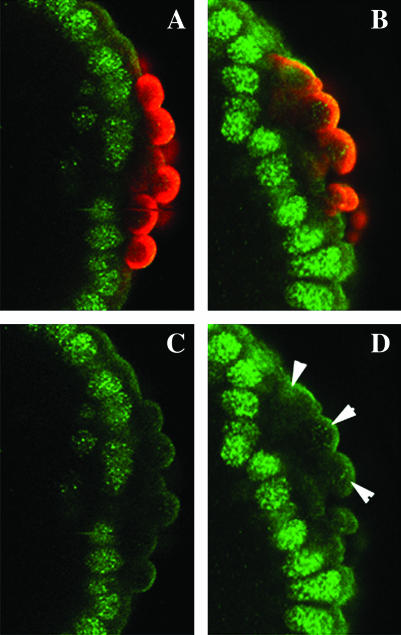Figure 5.—
Transcriptional quiescence in dfmr13 pole cells. (A and C) Wild-type and (B and D) dfmr13 embryos, 0–4 hr old, were fixed and stained with antibody against the polymerase II CTD domain phosphorylated on serine residue 2 (RP5) (imaged in green in A–D) and Vasa antibody (imaged in red in A and B). In wild-type CTD phospho-ser2 is found in somatic nuclei, but not in pole cell nuclei. In contrast, a subset of the dfmr13 pole cells have readily detectable levels of CTD phospho-ser2. Arrowheads in D indicate pole cells in the dfmr13 embryos with elevated levels of CTD phospho-ser2.

